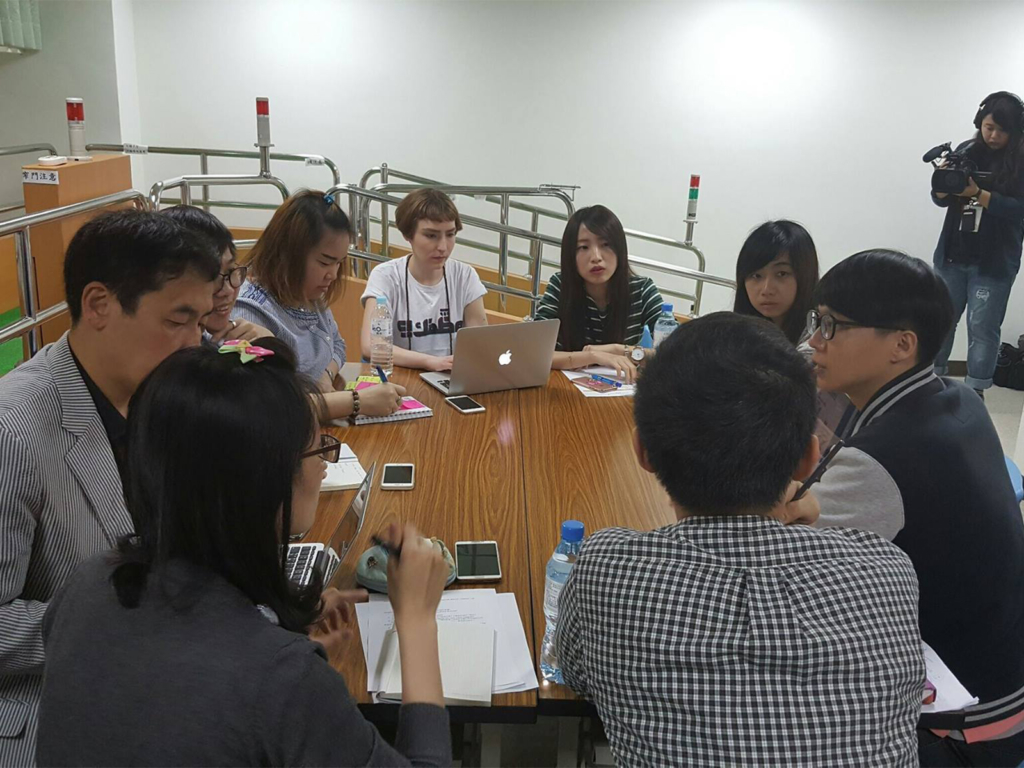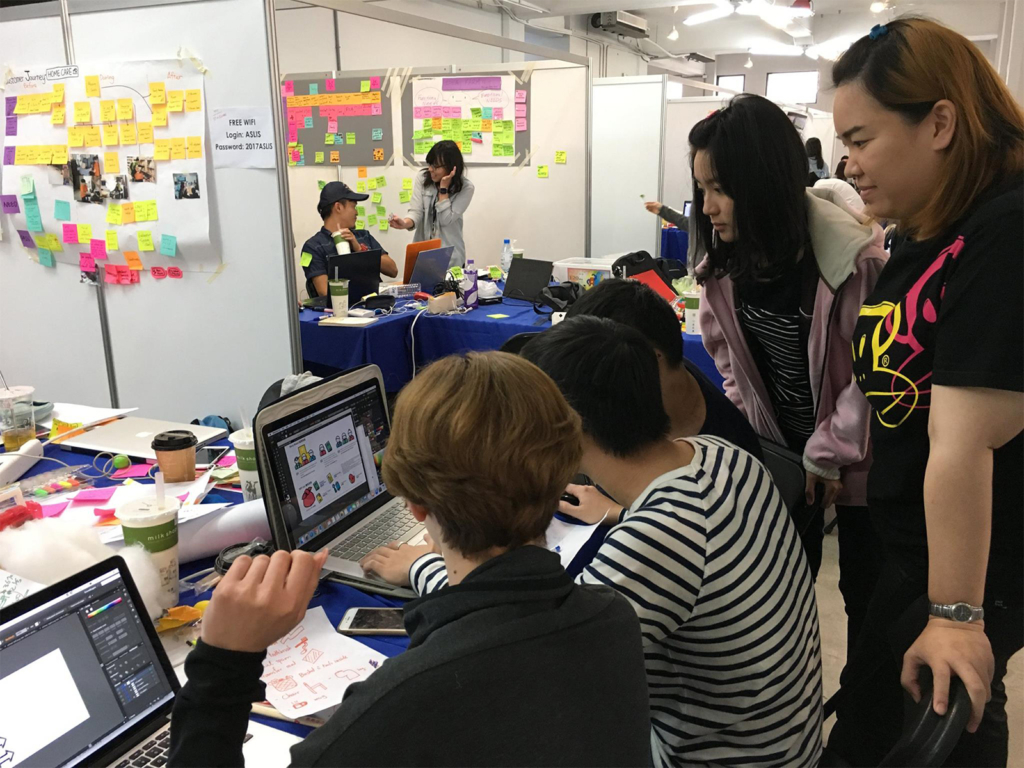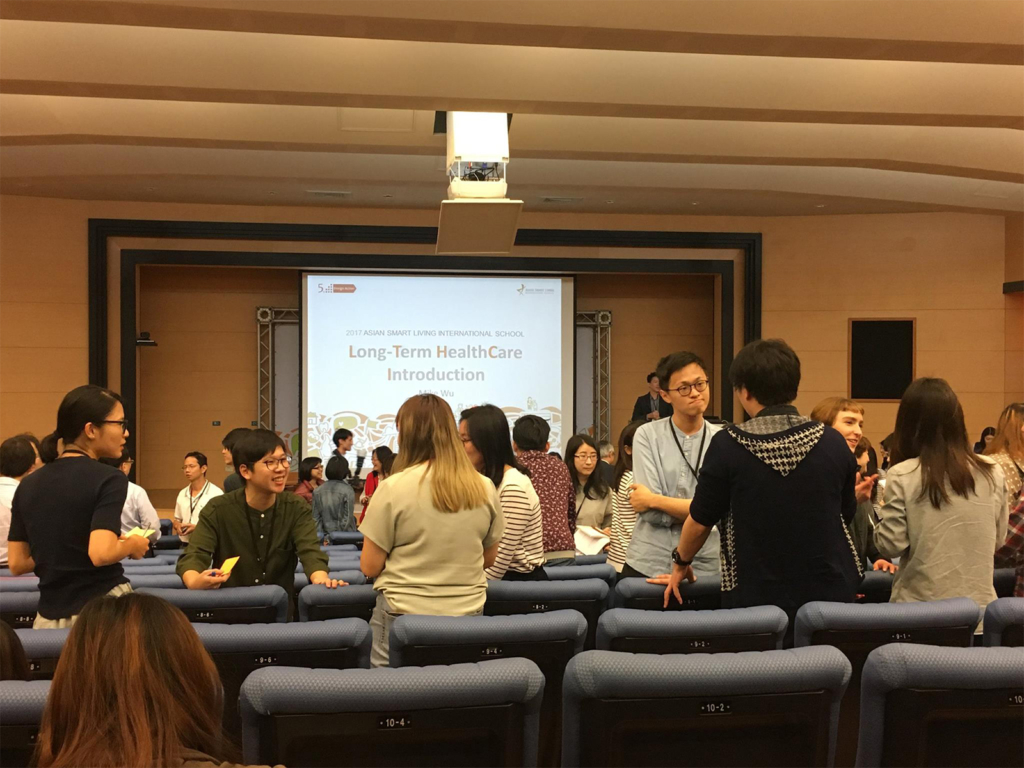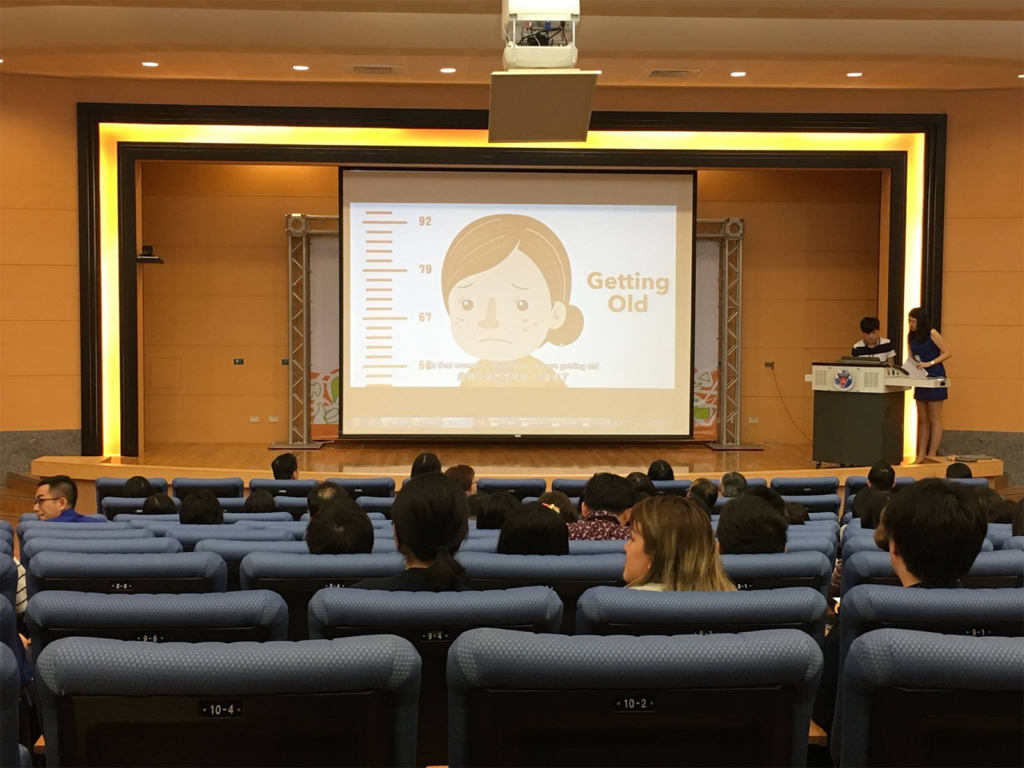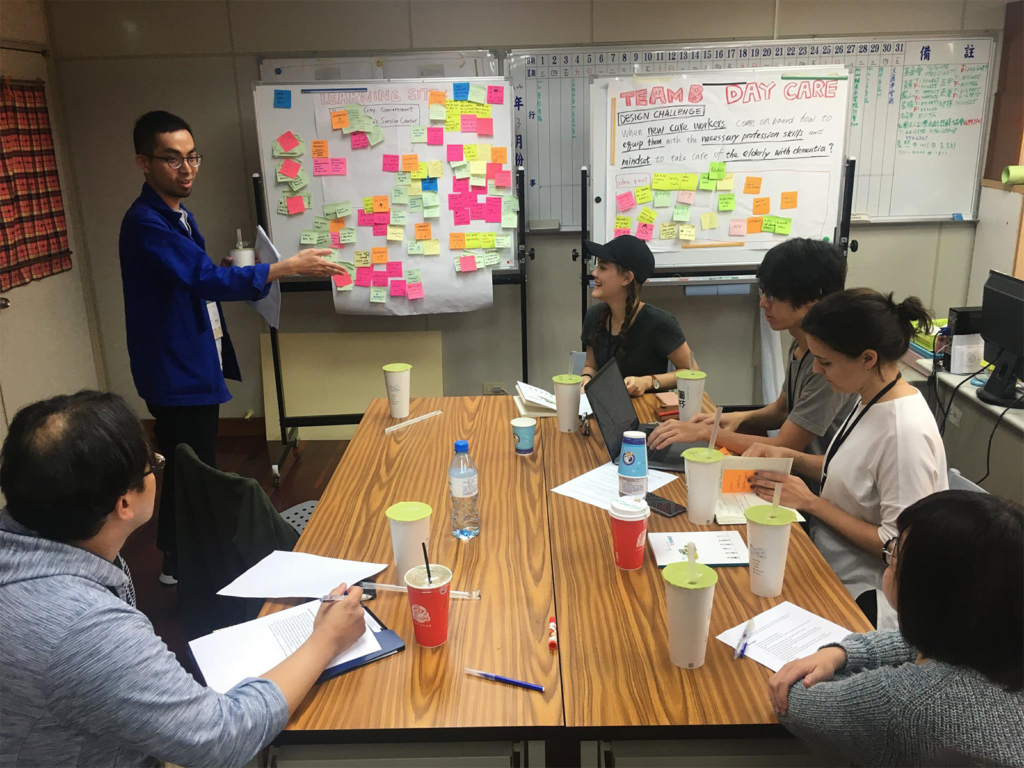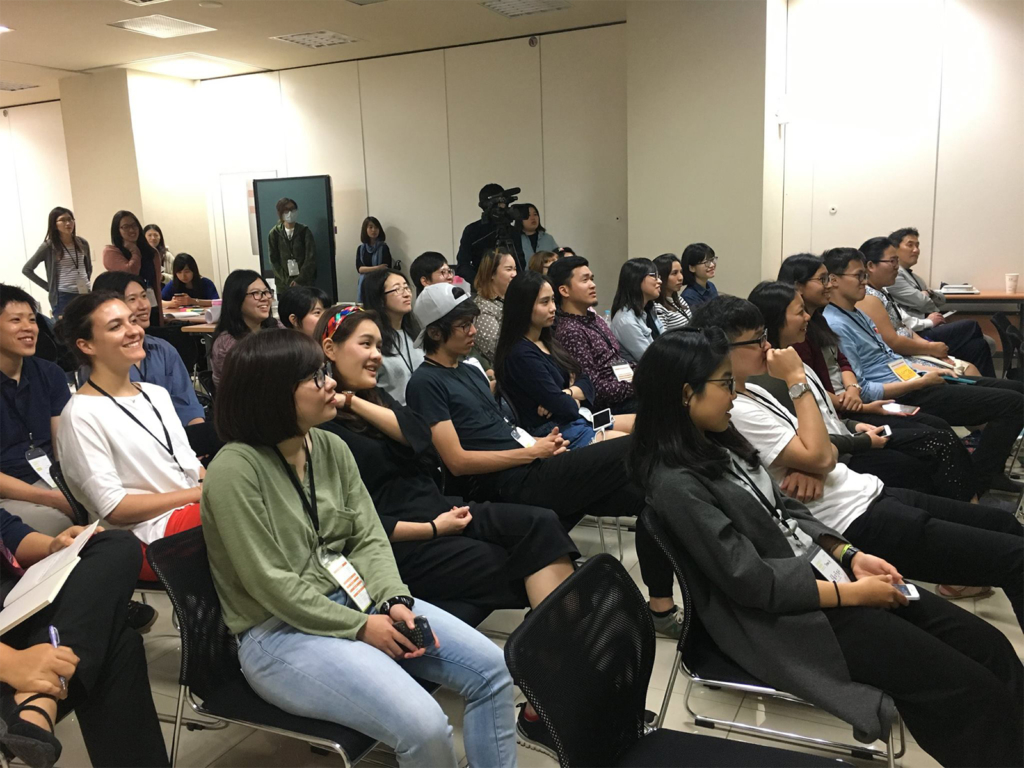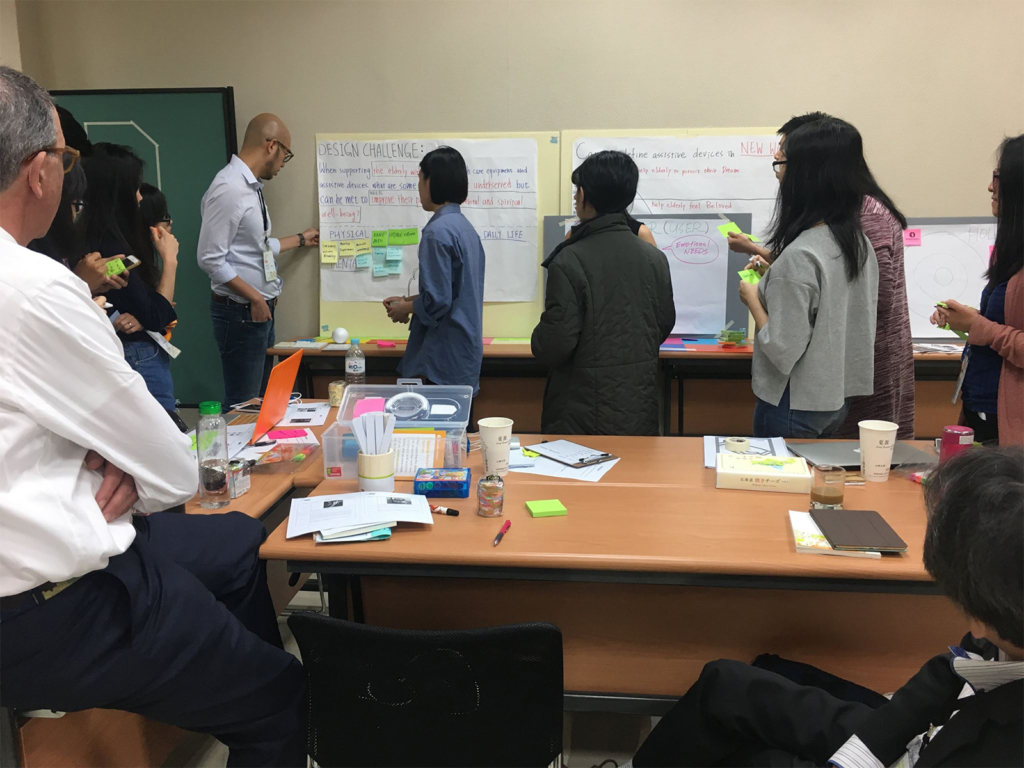An Interdisciplinary Workshop in Taiwan Explored the Interfaces of Design and Healthcare Demographic change with an increasing number of elderly people will be one of the most challenging tasks for future societies. In this matter, the public healthcare sector also includes the discipline of design since these services/approaches must also be smartly designed. In March 2017, KISD – Köln International School of Design was among the many international participants of the workshop “Smart Living – Long-Term Health Care Innovations“ in Taiwan in the context of the “2017 Asian Smart Living International School“, organized by Kaohsiung Medical University together with an NGO for social innovation.
In the last decade, there have been many publications predicting that “China will rule the world“ or that the “21st century will be an Asian one“. Alongside this hype, there were only a few skeptical voices arguing – it might have been in the same catchy way – that China will have grown old before it has ever grown rich. However, changing demographic structures will not only affect Asian and European countries like Germany, Taiwan or China since an aging society will be a social problem commonly shared among many developed countries. For Taiwan, for instance, an official UN report estimates that by 2050 one out of three people will be of an age of 65 or over. By 2060, Taiwan will be one of the countries with a percentage of almost 40 percent of elderly people, the report says estimating a 33.2 share for Germany.
Three Topics on the Agenda: Day Care, Assistive Device, Home Care
Given this context, interdisciplinary thinkers, researchers, designers, medical and healthcare professionals from Germany, Japan, Singapore, South Korea, Taiwan, and Thailand gathered for a 5-day-workshop in Taiwan in order to discuss current and future healthcare developments, to find resolutions for successfully addressing problems and chances of an aging population structure, and to elaborate on methodologies and tools aiming at, as the organizers put it, “applying a systematic method to integrate design-driven innovation“ for long-term healthcare solutions.
Split into six teams, the participants over the course of the week analyzed in particular the following topics: Day Care, Assistive Device, and Home Care with some special design questions on the agenda: Firstly, how to equip new care workers with the necessary professional skills and mindset to take care of the elderly, for example for those with dementia? Secondly, how to support the elderly with disabilities with tailor-made design devices that help to improve daily life and routine? And thirdly: How to build a reliable design eco-system for home care workers?
KISD as Knowledgeable Adviser
It is worth mentioning that KISD in recent years could witness a growing interest in design projects by students coping with socio-cultural phenomena like demographic change. “ProMemo“, “Yesterday Will be Nice“ or “The Hipbone Airbag – Mobility and Aging“ were just a few and even award-winning KISD projects in the last years that dealt, for example, with the problem of dementia, with design patterns providing tools for an easier handling of mobility for elderly people making KISD in Taiwan a good recipient and knowledgeable adviser for the interaction of healthcare and design – with one KISD student with field experience in the healthcare sector on the participant list: “It is great to see that so many internationals experts, whether they are from the area of design, healthcare or from other disciplines, come together here for really valuable discussions. Given my background with practical experience in the German and international healthcare sector, it is interesting to exchange ideas with counterparts. And you can sometimes acknowledge that here in Asia, compared to Germany, they seem to be ahead of the competition with regard to the topic of demographic change,“ says Julia Beer, a fifth semester BA Integrated Design student at KISD and formely for a lengthy period engaged in healthcare, providing aid for people and patients in hospitals.
From “Patients“ to “People“
The fact that design or design-driven innovation and its interaction with the public sector is now differently interpreted than before also manifests in using other slogans by renowned design and innovation studios with global reach. frog design, for example, stresses for its innovations in healthcare the principle of “designing better health for people, not patients“ – thereby indicating the change of rhetoric from “patients“ to “people“ and taking the same line as an official WHO (World Health Organization) paper from 2010, which states: “Healthcare has transitioned from a biomedical model to a holistic healthcare viewpoint. When taking care of the elderly, one has to comprehensively care for all the health-related needs.“
KISD professor Wolfgang Laubersheimer evaluates this increasing holistic approach of both healtcare and design the following way: “KISD proved to be very successful in Taiwan due to our approach of Integrated Design which serves as a good tool in order to cover and meet the multifaceted demands and challenges of the healthcare sector. We are also very happy to announce that KISD – Köln International School of Design will be co-hosting, together with Koahsiung Medical University, the workshop’s sequel in the coming year in Taiwan. In 2018, the topic will be ´Health and Food´.“
“Smart Living – Long-Term Healthcare Innovations“
Workshop, Taiwan, March 22 – March 26, 2017
organized by Kaohsiung Medical University (Taiwan), 5 % Design Action (Taiwan)
attended by institutions from Germany, Japan, Singapore, South Korea, Taiwan, Thailand

